If you’re wondering what is kauri wood, then you came to the right place. Kauri is a Maori name for a coniferous tree belonging to the Araucariaceae native to the northern parts of New Zealand.
Kauri trees are among the giant trees in the world. The largest kauri trees can rival the size of giant redwoods that grow in the Pacific northwestern region of the United States.
This guide can help you learn more about kauri wood and where to get it. Let’s touch on the many unique characteristics of kauri and find out why it’s selected for making boats, musical instruments, and furniture.
What is Kauri Wood?
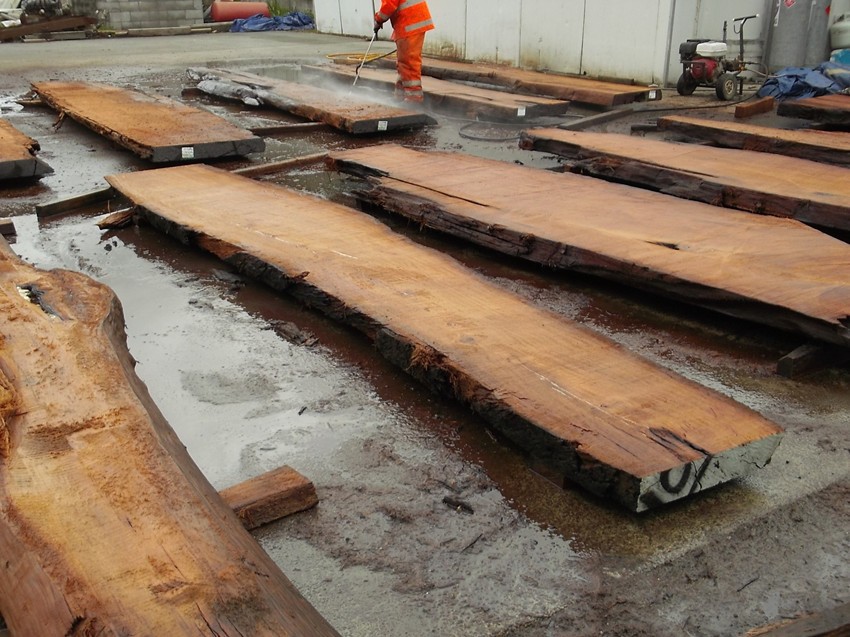
Kauri wood is Agathis australis, a coniferous tree that grows in the northern regions of the North Island of New Zealand. This tree is where you get kauri wood.
The kauri tree is the largest by volume tree in New Zealand, although it is not the tallest tree species. It can grow up to 50 meters tall and is often seen as the tallest living structure in forest canopies. The tree bark is smooth, while the leaves are small and narrow.
Kauri forests are known as one of the most ancient forests in the world. The ancestors of the kauri trees were from the Jurassic period, around 190 to 135 million years ago. The kauri is an ancient tree, but it has created a unique species of trees that can rival other recently evolved species.
Young kauri trees can grow tall, moving upwards until it develops a narrow cone shape. As the tree grows, the lower branches fall off to prevent vines and other plants from attaching or climbing on the tree. The bark also flakes off as the tree grows. This is a natural way for the kauri tree to prevent parasitic plants and pests from penetrating its grain. Large trees may flake off more, and the flakes accumulate along the base of the trunk.
The kauri leaves are long and broad with a leathery texture. This tree grows seeds that are dispersed by the wind. A single kauri tree produces male and female seeds.
Where Can You Get Kauri Wood?
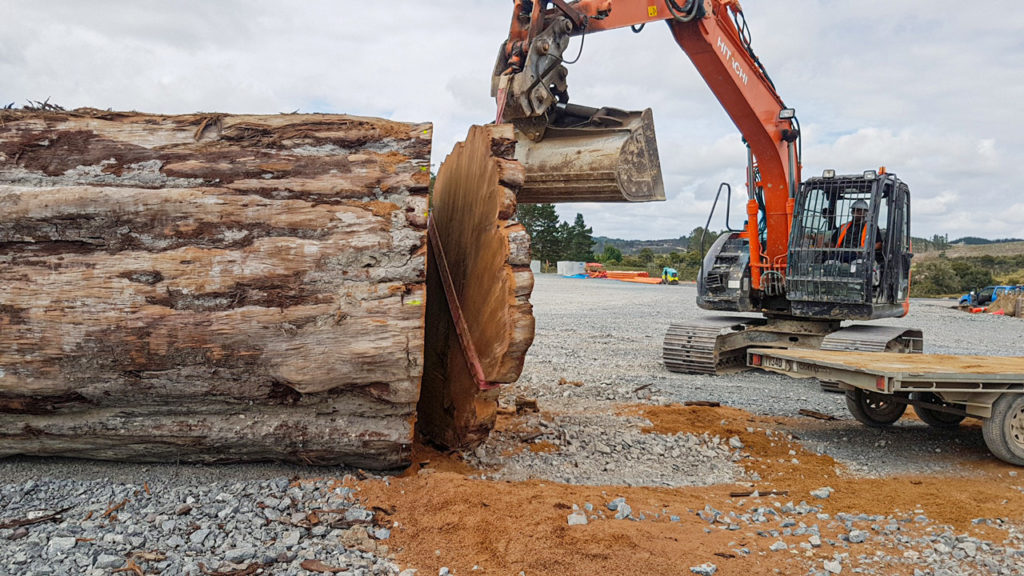
Kauri wood is harvested from the kauri tree, which is available only in New Zealand. When purchased abroad, kauri lumber can cost a small fortune. Kauri is classified as rare and exclusive wood. Furniture made from kauri, such as a tabletop, can range from $2,500 to $ 3,000.
Suppose you want to use kauri wood for making furniture, decorative items, flooring, or veneer; order wood from a trusted supplier. This will avoid buying fake or substandard kauri wood or furniture.
What are the Characteristics of Kauri Wood?
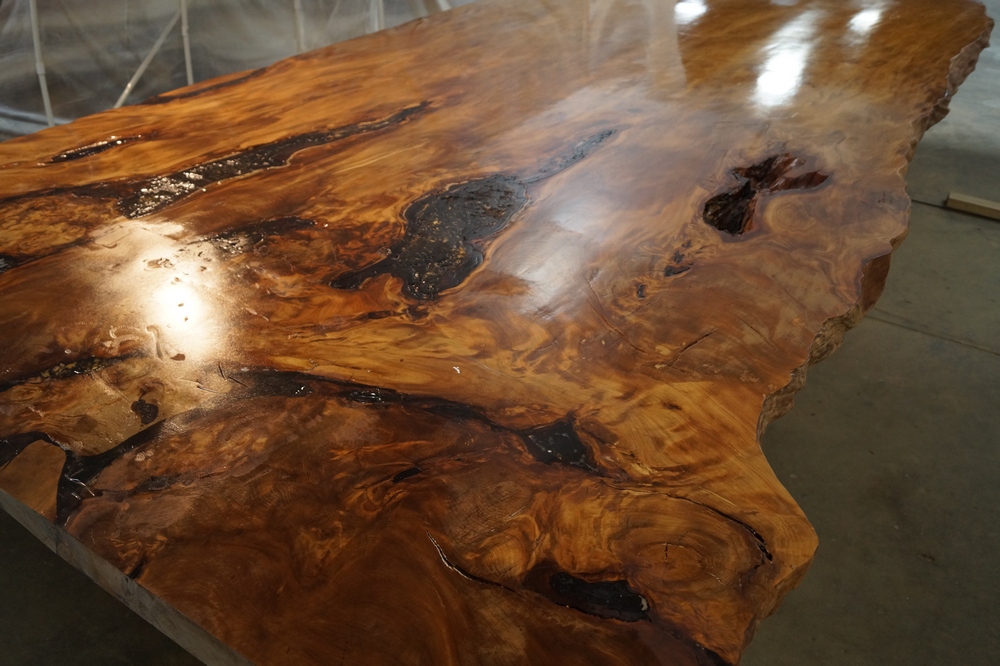
Now that you know where kauri wood comes from let’s focus on the kauri tree’s many excellent characteristics, which are unique to the kauri wood species. Learning about the tree’s characteristics helps woodworkers define the qualities of the wood or lumber if it’s fit or unfit for their specific project or task.
Kauri tree sizes
The kauri tree can grow up to 50 meters with trunks huge enough to compare with California sequoias. The largest kauri tree did not grow as tall and wide as the largest sequoias but had more wood in its trunks as sequoias develop tapering stems.
The largest kauri tree is known as The Great Ghost. This tree grew in Tararu Creek and had 8.54 meters in diameter and 26.83 meters in girth. Sadly, this remarkable tree was burned due to a fire in the area in 1890. A study also revealed that as a kauri tree grows, its growth rate also increases. But after it has reached a maximum period, the growth declines.
Kauri tree root structure
The kauri tree feeds on the organic matter found around forests. The kauri tree’s roots grow downwards and anchor securely in the soil. A good soil foundation is one of the keys to good tree growth, even in severe weather conditions like storms and tropical cyclones.
This tree also bears waxes, tannins, and phenols. These substances are dangerous to many microorganisms, leading to a high buildup of dead microbes that its root feeds on. The kauri wood also houses a fungus called mycorrhiza, forming a mutualistic relationship with the tree. This fungus helps the tree take up more rich nutrients in the litter surrounding it as it also takes nutrients from the tree’s massive roots.
Kauri Uses
In the past, Maori used kauri wood to build boats and houses and carve various items. The wood has gum which was used to start fires and for chewing. When the European settlers arrived in 1700 to the 18000s, sailors harvested trunks of kauri trees to build ship masts, spars, and other parts.
Sailors felled forests of mature kauri trees. Also, many forests were cleared for planting and crop cultivation in the early and middle of the 20th century. There is a strong call to protect these forests as these are not just homes of kauri trees. Many plant and tree species also call kauri forests their homes. Kauri forests can live a long time, which has contributed to the development of substances like tannins and gum.
Kauri uses today
Nowadays, kauri wood is restricted to protect its natural habitat further. It is popular in construction because of its strength and unique parallel grains. This wood is sold as veneers, ornamental wood paneling, and high-end furniture making.
The crowns of the kauri wood and the sump were prized for their natural beauty. These were used to make wood panels and furniture. The kauri trunk is common for practical furniture such as manufacturing bridges, barrels, cisterns, molds, fences, rollers, railway components, and other construction projects.
The kauri gum, or the semi-fossilized resin, was valuable in the 19th to 20th centuries. This was the most critical component in the manufacture of varnish.
Kauri is classified as first-rate timber wood. This is because of its strength and resistance to rotting and mold. This is why kauri is used to construct boats and other marine components. But despite this quality, kauri must be protected using varnish, epoxy, or paint to prevent quick rotting.
Another reason why kauri wood is so famous for boat builders is that it comes with more extended and clearer lengths than other boat-building timber. This wood is also lighter than other hardwood; plus, it develops a lovely sheen when it is varnished or oiled.
Kauri wood is easy to saw, cut, or plane. It can also hold screws, nails, and other fasteners. This wood retains its shape as it won’t easily warp, crack, or split.
You can expect kauri wood to become darker as it ages. From a bright color, this wood can turn rich golden brown. As of writing, Kauri wood is sold in limited amounts. The most readily available kauri wood species is the Fiji kauri. This species has a very similar look to New Zealand kauri wood but is much lighter.
What is the Species of Kauri?
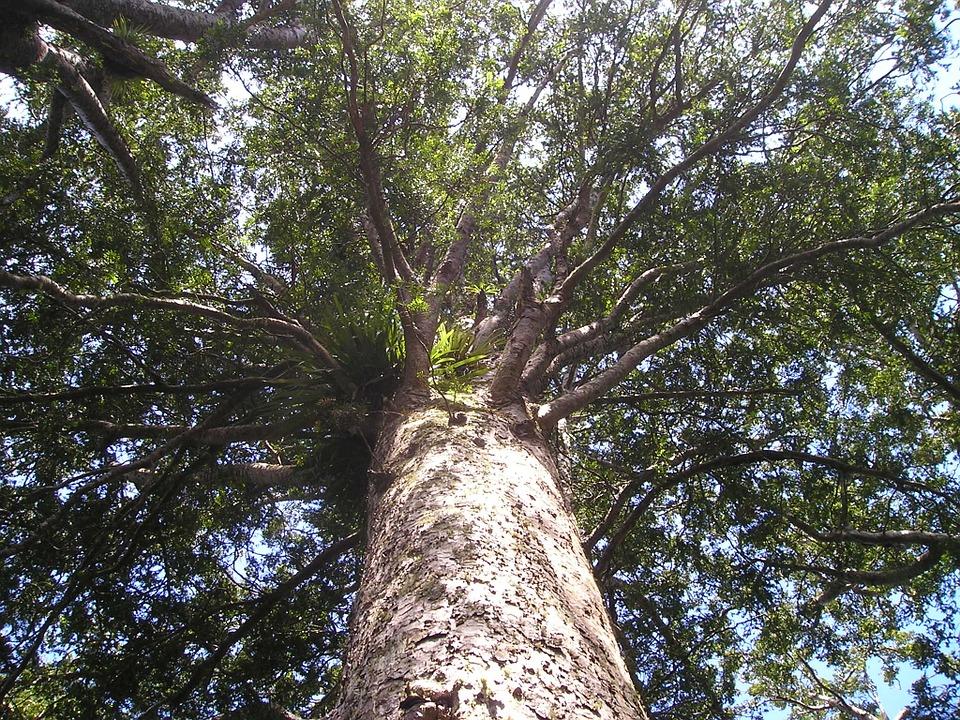
Kauri is available in several species, but there are only a few more popular ones that wood carvers and woodworkers long to use.
New Zealand Kauri (Agathis australis)
New Zealand kauri is the most common kauri species with massive sizes. These trees are comparable to the largest Sequoia trees and giant redwood trees growing in the pacific northwest areas of the United States.
- Distribution: This tree grows only in New Zealand
- Tree Size: 150 to 200 feet tall and 5 to 10 feet
- Average Dried Weight: 34 pounds per cubic feet
- Specific Gravity:.44, .54
- Janka Hardness: 730 pounds-feet
- Appearance: New Zealand kauri wood has a pale yellow-white to golden-brown heartwood. The sapwood may have the same color as the heartwood. The kauri tree is so huge that you’ll find the grain clear with minimal knots. Some kauri woods have shiny grains. This figure is mainly referred to as whitebait, referring to shiny schools of fish in New Zealand waters.
- Grain or Texture: the New Zealand kauri wood is straight and has an even texture and moderate shine.
- Resistance to Rotting and Mold: this wood is very durable to decay, but it can be susceptible to insect attacks such as post beetles.
- Presence of Odor: New Zealand kauri has no smell or odor.
- Workability: this wood has a moderate density with a straight and consistent grain. These qualities make it very workable. You can use hand or power tools with very minimal mistakes. You can also use glues and all kinds of finishes with this wood.
- Availability: harvesting of New Zealand kauri trees is strictly controlled in the country. It is very rare that you’ll find retailers and suppliers selling this wood outside its natural area.
- The most common kauri species for sale is the ancient kauri or the swamp kauri. These are wood from fallen trees and have been buried and preserved under swamps and bogs in the country. These kinds of kauri trees are complicated to extract, and thus these can also be very expensive.
- Uses: New Zealand kauri wood makes cabinets, furniture, boats, and musical instruments such as guitars, turned items, and veneers.
Swamp Kauri
The swamp kauri is a kind of kauri wood, and it’s not a species. The term is simply a trading name, meaning that the kauri wood is from trees that were retrieved from the marsh and swamps of the North Island in New Zealand.
Swamp kauri is said to be thousands of years old. Those logs that have been preserved underground are said to be more than thousands of years old. The reasons why these massive swamp kauri trees were felled and buried in swamps range from a very violent force, flood, tsunami, or storm.
Also, some experts believe that because New Zealand’s North Island is located along the boundaries of two tectonic plates and thus, an earthquake may have caused these giant trees to fall and become covered in the swamps.
Some studies revealed that whatever caused the burial of kauri trees in New Zealand may have been the same factor that has caused floods based on early civilizations.
- Distribution: Swamp kauris are from New Zealand
- Average Dried Weight: 34 pounds per cubic feet
- Janka Hardness: 730 pounds-feet
- Workability: there is a high demand for swamp kauri because of its high workability. This is a very versatile timber that accepts screws, nails, and other fasteners. It is valuable wood that takes paint, varnish, and different finishes. According to experts, swamp kauri is the “oldest workable wood.”
- Availability: Swamp kauri is an expensive alternative to New Zealand kauri wood as the latter’s harvest and use is carefully controlled by the New Zealand government. Swamp kauri is so costly because, aside from being one of the oldest and most exotic woods, it is tough to retrieve this wood from underneath swamps and bogs.
- Uses: Swamp kauri is helpful in making furniture, boat parts, and decorative objects.
East Indian Kauri (Agathis dammara)
East Indian kauri is a kauri species used for its wood and copal or resin. This tree was classified as pine because of its shape and growth. It initially had the scientific name Pinus dammara.
The East Indian kauri is often compared to the New Zealand kauri. But this wood is lighter when it comes to weight and is not as strong as the New Zealand variety. Also, East Indian kauri is susceptible to rotting, and thus, it is helpful as plywood and veneer.
- Distribution: East Indian kauri is native to the Pacific Islands in Southeast Asia
- Tree Size: 150 to 200 feet tall and 3 to 6 feet wide
- Average Dried Weight: 32.5 pounds per cubic feet
- Specific Gravity: .45, .52
- Janka Hardness: 610 pounds-feet
- Appearance: the East Indian kauri wood has a pale yellow to white heartwood and sapwood. The two are not clearly divided, so it’s hard to sand or finish extensively. The tree is enormous, and thus the grain is mostly clear with very minimal knots present. There is also minimal wastage with this wood’s uniform grain. The East Indian kauri species can quickly develop a blue stain when it is not dried correctly.
- Grain or Texture: this wood has a straight grain with a very fine and even texture. You’ll also notice a moderate shine before applying any finish or varnish.
- Resistance to Rotting and Mold: this wood is not durable to mold and moisture. It is classified as perishable to decay. Even with its size, it is susceptible to attacks from some insects and pests.
- Presence of Odor: this wood does not have any characteristic smell or odor.
- Workability: this wood has a moderate density with a straight and very consistent surface. These qualities make the wood highly workable. You can use hand tools or power tools to cut and shape this wood. You can also use all kinds of wood glues and finishes with East Indian kauri wood.
- Availability: East Indian kauri has a restricted distribution, and thus, it is not exported to other countries.
- Uses: this kauri species is so exotic and has a high demand. It is primarily used as plywood, musical instruments, veneer, kitchen utensils, crates, and other containers.
Fijian Kauri (Agathis macrophylla)
The Fijian kauri is also called Pacific kauri. This is a massive and quick-growing tree that has been severely logged for its high-quality lumber. Fijian kauri is more available and more affordable than New Zealand or Swamp kauri as this species is primarily grown in plantations.
Fijian kauri is slightly stronger compared to other kauri species, but it remains susceptible to mold and decay.
- Distribution: the Fijian kauri wood is native to Vanuatu, Fiji, and Santa Cruz Islands. This wood is grown and harvested in plantations located in various areas of the Pacific Islands.
- Tree Size: 100 to 130 feet tall and 3 to 7 feet wide
- Average Dried Weight: 34.3 pounds per cubic feet
- Specific Gravity: .45, .55
- Janka Hardness: 840 pounds-feet
- Appearance: This kauri species has a pale yellow to white heartwood and sapwood. The two structures are not demarcated, so it’s challenging to cut, sand, and finish this wood. Fijian kauri is enormous with an apparent and even grain, and thus, it has minimal wastage when worked. This kind of kauri wood can quickly develop a blue color along the surface of the grain when it is not cured correctly.
- Grain or Texture: This species has a straight and even grain texture and has a lovely moderate shine.
- Resistance to Rotting and Mold: Fijian kauri is not durable or perishable from rotting or decay.
- Presence of Odor: this wood has no characteristic odor.
- Workability: Fijian kauri has a moderate density. It has a straight and very consistent grain making it very workable. You can use hand tools or power tools to cut and shape this wood without any issues. You can use glues and apply any kind of finish or paint on this kauri species.
- Availability: this wood is not exported to countries in North America. It is available in limited supply and is primarily available only in the Pacific Islands and also in Asia. These are the regions where kauri is in very high demand as lumber, carving, and turning wood.
- Uses: You can use Fijian kauri wood to build boats, cabinets, furniture, kitchen utensils, turned objects, and containers.
Queensland Kauri (Agathis robusta)
Queensland kauri is composed of two species of Agathis: A. microstachya found in North Queensland and A. robusta native to South Queensland. A. microstachya is heavier and harder compared to the species from the south. However, it is very hard to tell these two kinds of wood apart using only the naked eye.
- Distribution: this wood is native to Australia in Queensland.
- Tree Size: 100 to 130 feet tall and 3 to 7 feet wide
- Average Dried Weight: 29.3 pounds per cubic feet
- Specific Gravity: .41, .47
- Janka Hardness: 560 pounds-feet
- Appearance: Queensland kauri has a pale yellow to white heartwood and sapwood. Just like its cousins, the sapwood and heartwood are not clearly demarcated. This is a very large tree, and thus, the grain is apparent with absent knots and imperfections. Almost all the lumber is used for all projects. You must dry and cure this wood very well as it can develop a blue stain that’s difficult to remove.
- Grain or Texture: this wood has a straight grain and has a fine texture with moderate shine.
- Resistance to Rotting and Mold: this wood is classified as perishable from mold, rotting, and decay.
- Presence of Odor: there is no odor or smell in Queensland kauri wood.
- Workability: Queensland kauri has a moderate density and straight grain. These are the reasons why many woodworkers and carvers prefer to use this wood for different projects. It is suitable for all shaping and machining operations. You can use glue, finishes, and stains on Queensland kauri wood with no issues.
- Availability: In the past, Queensland kauri has been logged for its beauty and strength. Nowadays, the kauri forests in the area are protected, and the wood is no longer available commercially.
- Uses: this wood is very durable and lovely, which is why it’s used to make furniture, musical instruments such as violins, turned projects, plywood, and veneer.
Final Words
Kauri wood is a very strong, very beautiful wood. This wood comes from the kauri tree, which is one of the largest and most ancient trees in the world. This wood is protected locally and thus is not readily available as lumber and for other projects. The species from Fiji is the only kauri wood that’s grown in plantations but is still expensive to buy from abroad.
Kauri wood was used to make ships and large building projects, but after being declared as a protected species, it is now regulated, and only a few species are available as plywood and veneer. If you’re planning to use kauri plywood or veneer, be sure to buy only from trusted dealers and retailers to ensure you’re using genuine kauri wood.
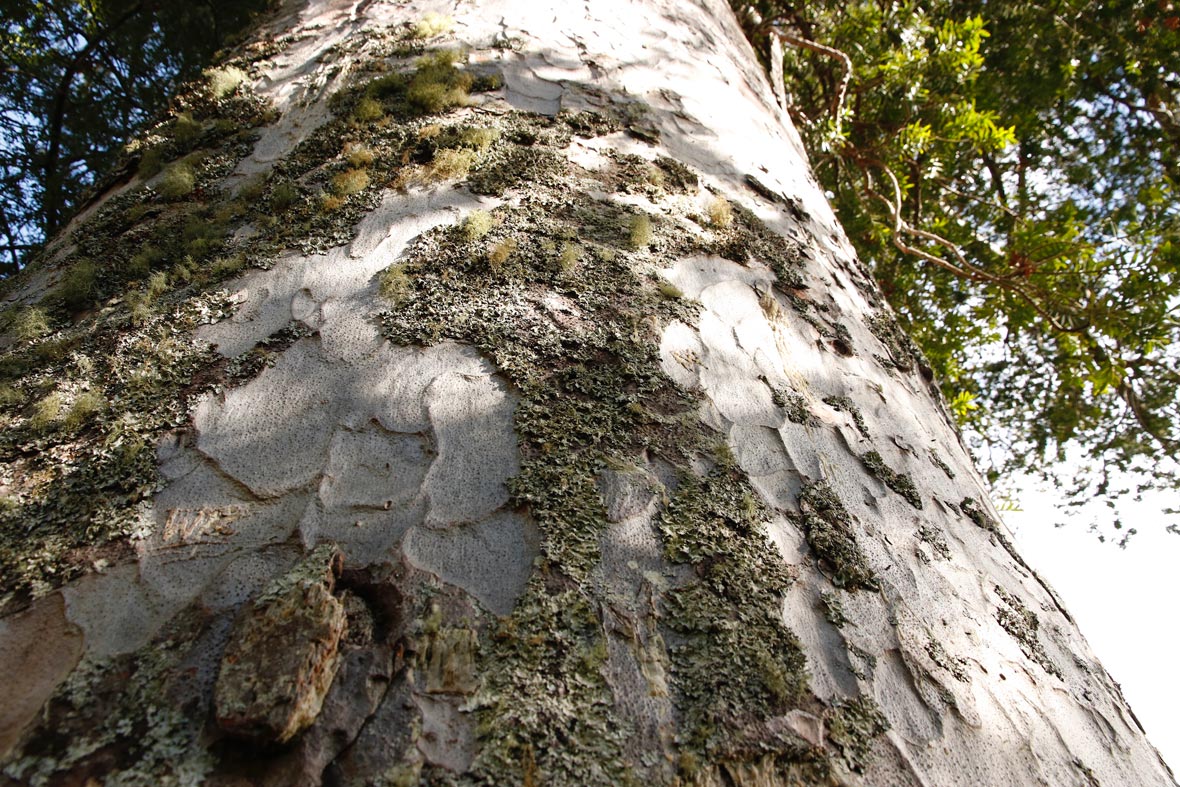
Leave a Reply